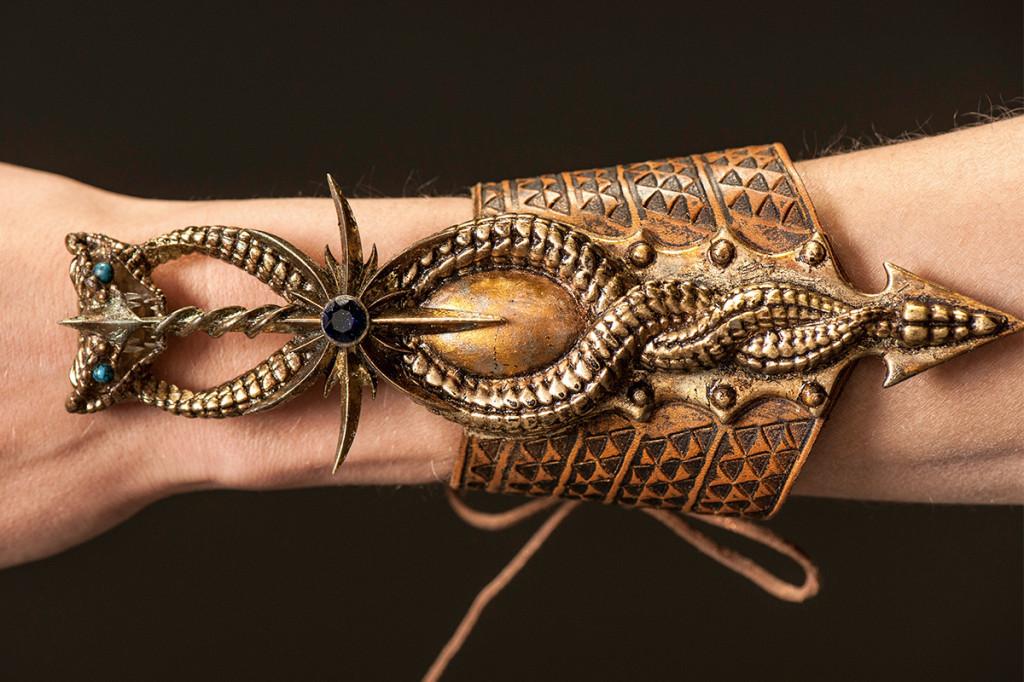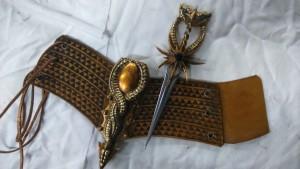 Warning! If you haven’t seen the season six premiere of HBO’s Game of Thrones yet, you might want to stop scrolling through this article and start watching the long-awaited and adrenaline-pumping episode right away (but be sure to come back after you’ve finished!).
Warning! If you haven’t seen the season six premiere of HBO’s Game of Thrones yet, you might want to stop scrolling through this article and start watching the long-awaited and adrenaline-pumping episode right away (but be sure to come back after you’ve finished!).
But if you’re one of the 10.7 million people who have, you’ll probably recall the shocking scene within the kingdom of Dorne, where Ellaria Sand—paramour of the late Oberyn Martell— suddenly plunged a hidden dagger into a character who was both closely related to her and (seemingly) vital to show’s plot. Unbeknownst to me, until today, the weapon that was utilized in the scene, which is called Ellaria’s Dagger, was actually created with the help of the Dutch-founded 3D printing marketplace and service provider Shapeways.
Planned in secrecy over the past few months, the designers from Game of Thrones and Shapeways had struck up a partnership to get 3D printed items and weapons more involved within the seven kingdoms. Ellaria’s Dagger was modeled by 3D designer Sean Forsyth, which Shapeways then 3D printed with their detail-oriented and cloud-like Frosted Ultra Detail plastic material. The material is made from a UV cured acrylic polymer, and provides a high resolution of 29 micron layers. The Frosted Ultra Detail material is available to all Shapeways customers, costing $3.49 per cm3 with an additional $5 handling fee. Shapeways also offers an enhanced version, called the Frosted Extreme Detail, which is slightly more costly but offers an even higher resolution of 16 microns.
After Ellaria’s Dagger was 3D printed, it was sent over to Game of Thrones weapons master and armory expert Tommy Dunne, who had to make the 3D printed dagger appear as a realistic “Dornish” weapon. Using the help of David O’ Brien, the managing director of the Dublin-based Bronze Art Fine Art Foundry, the 3D printed dagger was given a bronze finish, transforming the plastic prop into the serpent-inspired and show-altering weapon shown in the season six premiere. Dunne was thrilled by the prospect of using 3D printing to create an intricate and detailed weapon, and according to him, the show’s producers were as well.
“I have always wanted to incorporate 3D Printing into armoury, and this was our first chance in actually doing so,” Dunne said to Shapeways. “The outcome of the Dorne Dagger far exceeded my wildest dreams from our original drawing concept, so it was a great first experience in using this technology in our field. It was a delicate scene to shoot, but the producers of the show loved the dagger so we’re really happy with the results.”
Though this may be the first reported use of 3D printing technology on the set of Game of Thrones, we’ve covered many instances of fans recreating their favorite props on their own printers, such as the much-desired Iron Throne, a wilding skull mask, and even a replica of Oberyn Martell’s blade. Back in February, we also released a Weekly Roundup on ten free 3D printable Game of Thrones-based models from around the Internet. Shapeways also has a variety of Game of Thrones-inspired designs on their marketplace, from a Sword Pendent to a Dragon Skeleton. While many fans—including myself— are becoming quite wary of the way Dorne’s plot is unfolding, it’s nice to see that the first sudden and shocking twist of season six was made possible by the 3D printing prowess of Shapeways. This could be a growing trend in special effects. What do you think? Discuss in the Game of Thrones 3D Printed Dagger over at 3DPB.com.
[Source: Shapeways / Images: Shapeways via HBO and Tommy Dunne]Subscribe to Our Email Newsletter
Stay up-to-date on all the latest news from the 3D printing industry and receive information and offers from third party vendors.
You May Also Like
Precision at the Microscale: UK Researchers Advance Medical Devices with BMF’s 3D Printing Tech
University of Nottingham researchers are using Boston Micro Fabrication‘s (BMF) 3D printing technology to develop medical devices that improve compatibility with human tissue. Funded by a UK grant, this project...
3D Printing Webinar and Event Roundup: April 21, 2024
It’s another busy week of webinars and events, starting with Hannover Messe in Germany and continuing with Metalcasting Congress, Chinaplas, TechBlick’s Innovation Festival, and more. Stratasys continues its advanced training...
3D Printing Webinar and Event Roundup: March 17, 2024
It’s another busy week of webinars and events, including SALMED 2024 and AM Forum in Berlin. Stratasys continues its in-person training and is offering two webinars, ASTM is holding a...
3D Printed Micro Antenna is 15% Smaller and 6X Lighter
Horizon Microtechnologies has achieved success in creating a high-frequency D-Band horn antenna through micro 3D printing. However, this achievement did not rely solely on 3D printing; it involved a combination...
































